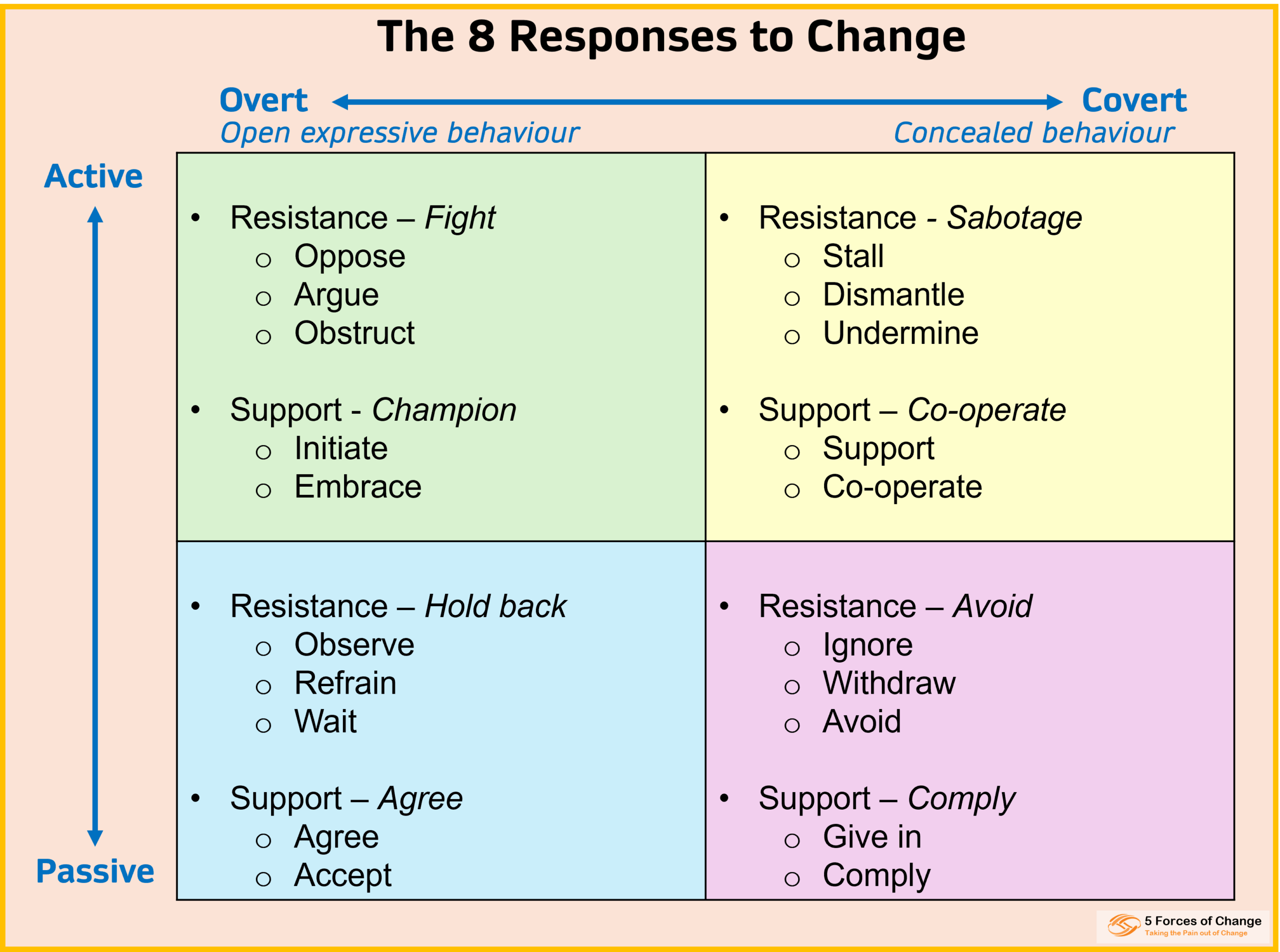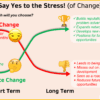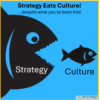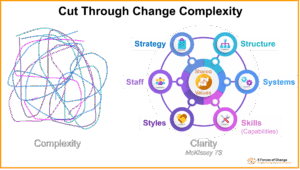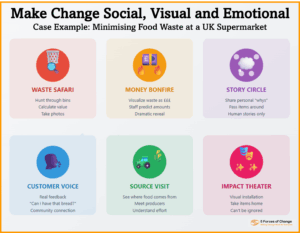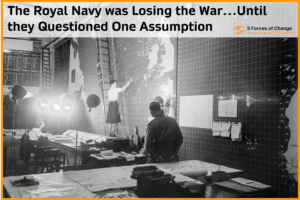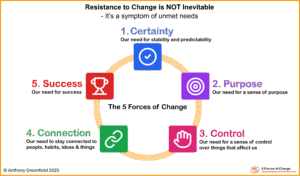After analysing 615 employees across 9 organizations undergoing major change, researchers discovered something fascinating: it’s not what people DO that predicts resistance—it’s what they’re THINKING. Most leaders focus on the visible behaviours during change initiatives. But here’s what the research revealed. Firstly, here are the 8 Responses to Change on which the research is based and culminating in addressing irrational ideas that trigger resistance to change.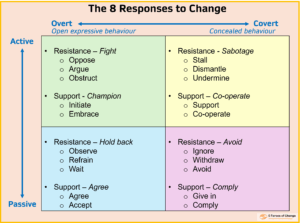
The 8 Responses to Change
As the diagram below illustrates, there are four ‘flavours’ of Resistance and four ‘flavours’ of Support for change.
What most leaders miss is that much of the real resistance and support happens in the COVERT zones – people who comply publicly but resist privately or withdraw rather than openly oppose.
But here’s the game-changer: 44% of resistance intentions were explained by just two interconnected factors:
- Irrational thinking patterns (which drive…)
- Emotional responses
The Top 4 “Irrational Ideas” That Kill Change Initiatives:
- Victim mindset: “They’re doing this TO (hurt) me” (vs. recognizing organizational necessity)
- Avoidance: “I’ll just wait this out until it passes”
- Lack of control: “There’s nothing I can do about this anyway”
- Passivity: “Someone else will figure this out”
What Successful Change Leaders Do Differently
Tackle victim mindset head-on
- Help people move from “They’re doing this to hurt us” to “This change serves a business purpose we can understand”
- Create transparency around the ‘why’ behind decisions
Address avoidance with engagement
- Don’t let people “wait it out”—involve them in shaping solutions
- Make participation meaningful, not tokenistic
Restore sense of control
- Show people exactly where they DO have influence
- Provide choices within the change framework
Transform passivity into ownership
- Assign specific roles and responsibilities during transition
- Recognize and reward proactive behaviour
Master cognitive reframing
- Transform “should” statements: “Employees should just accept this change” becomes “I prefer employees embrace this change, and I’ll work to make it beneficial for them”
- Replace catastrophic thinking with realistic assessment
The Bottom Line
Your next change initiative’s success isn’t just about the strategy, timeline, or communication plan. It’s about understanding the psychological processes happening in your people’s minds.
Source: Bovey & Hede (2001) – “Resistance to organizational change: the role of cognitive and affective processes” – Leadership & Organization Development Journal
ALT Text: A square divided into 4 quadrants. The horizontal axis is labelled left-to-right Overt (open expressive behaviour) to Covert (concealed behaviour). The vertical axis is labelled from top to bottom Active to Passive. For instance, the top right quadrant represents Covert-Active Resistance or Support where people conceal their active support or resistance. The diagram thus comprises 8 types of response to change.

